Artist as archaeologist: Susan Hiller's first solo exhibition at London's Lisson Gallery
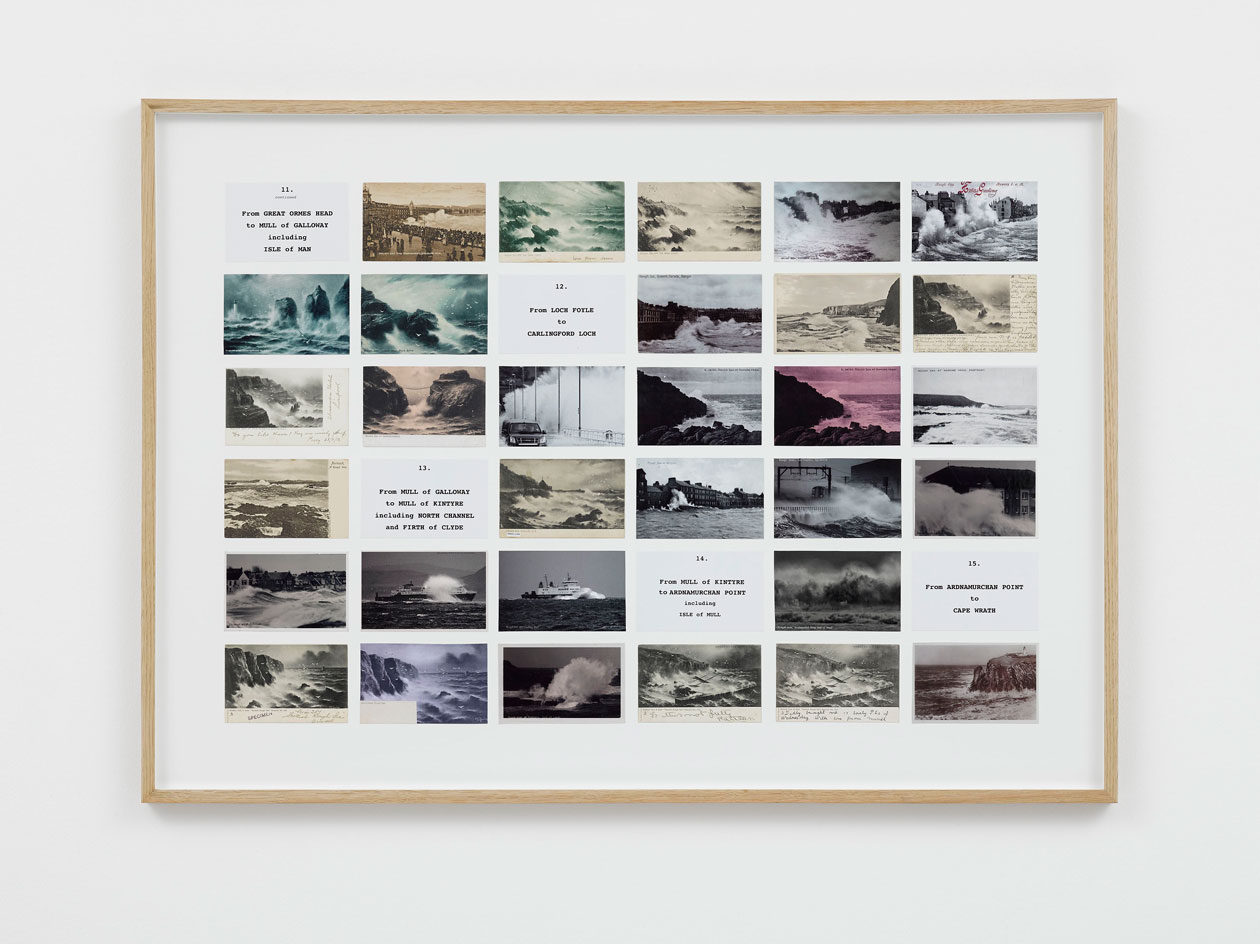
The art of Susan Hiller is not easy to get to grips with. There is almost six decades’ worth of it, for a start. And it's varied; it helps to know that she studied film and photography, archaeology, linguistics and anthropology, though not all at the same time and not in that order. She rejected anthropology’s claims on rational distance if not the taxonomic impulse. And all of that is in Hiller’s debut show at London’s Lisson Gallery; her first in the city since the major career survey at Tate Britain in 2011.
As Hiller, says, her work is clearly an act of archaeology but she digs into unusual spaces, mostly systems of belief and dis-belief, and in unusual ways; bouncing between medium – from assemblies of found objects to pioneering multi-media work.
Hiller has a peculiar and continuing fascination with extra-scientific phenomena – or perhaps consolations of a spirit-world now outlawed by rationality, or just plain outlawed. Works such as Mary Essene (1975–81), Alphabet (1985) and this year’s Facing The Real (2015) deal with paranormal activities like telepathy, unconscious transmission and automatic writing. The Photomat series, started in the 1970s, are ghostly grids of photo booth portraits covered with indecipherable scrawl; images from some other side.
The show also includes Belshazzar’s Feast, the writing on your wall (1983–84), the first video installation piece bought by the Tate and shown here in its campfire version; Wild Talents (1997), which riffs on horror movie portrayals of the occult; while Resounding (Infrared) of 2013 matches stories of flying saucer sightings with images of verifiable cosmic wonders. The exhibition also includes Hiller’s series of homages to other artists – Joseph Beuys, Gertrude Stein and Marcus Stein – though these pieces too touch on the mystic, what Hiller calls her ‘paraconceptualism’.
The centrepiece of the show is On the Edge (2015), 482 postcards of 219 costal locations in the UK, mostly savaged by waves and storm-racked; miniaturised, mailable claims on the sublime.
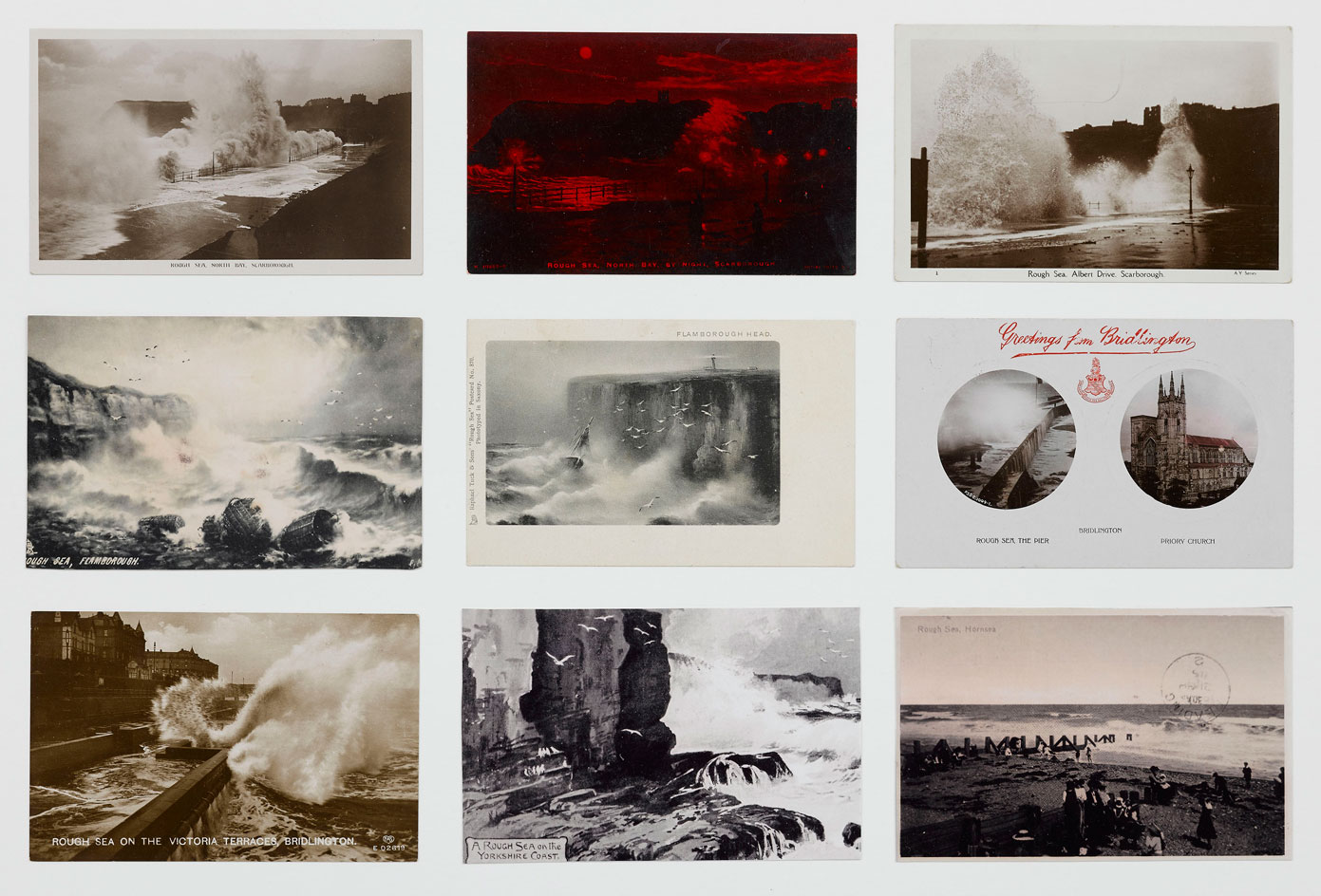
In On The Edge, 482 postcards are presented side by side, displaying 482 views of 219 craggy, seaside locations around Britain.
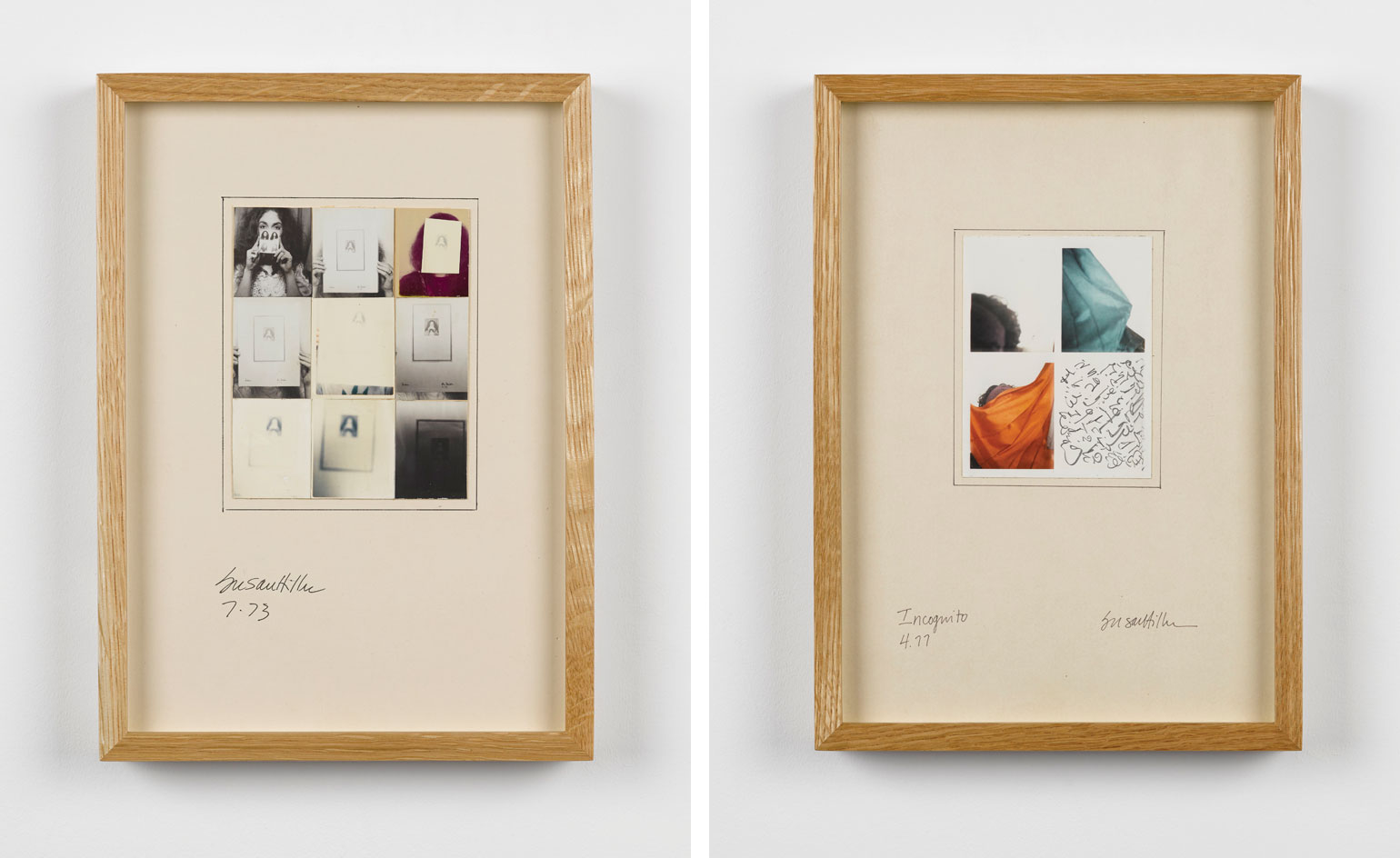
These pictured early works explore the nature of portraiture, seen alongside the automatic workings of photobooth cameras and evoking notions of the ’ghost in the machine’.
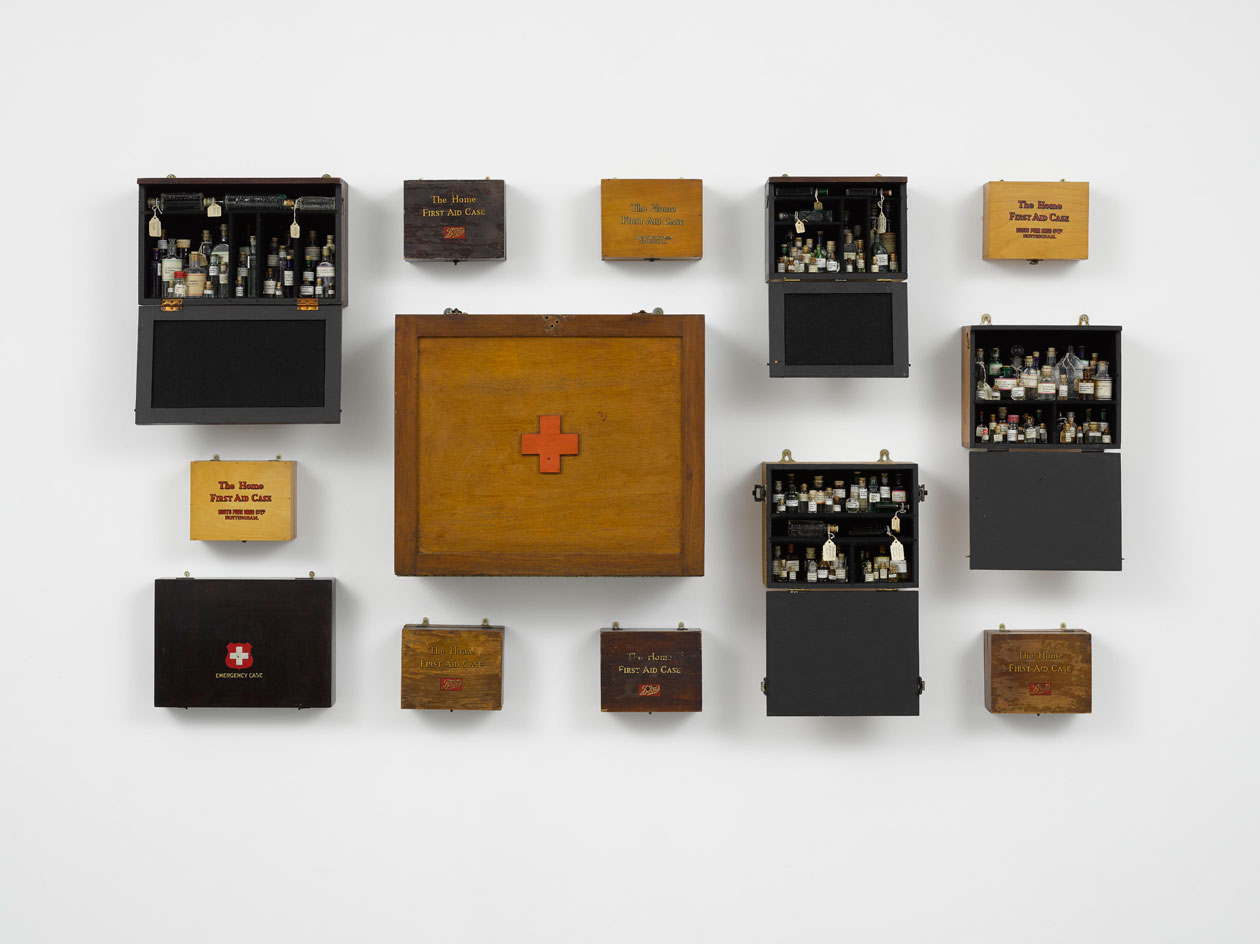
First-aid cabinets contain phials of holy water, referencing Joseph Beuys’ ability to endow ordinary materials with sacred values. Pictured: Emergency Case: Homage to Joseph Beuys, 2012
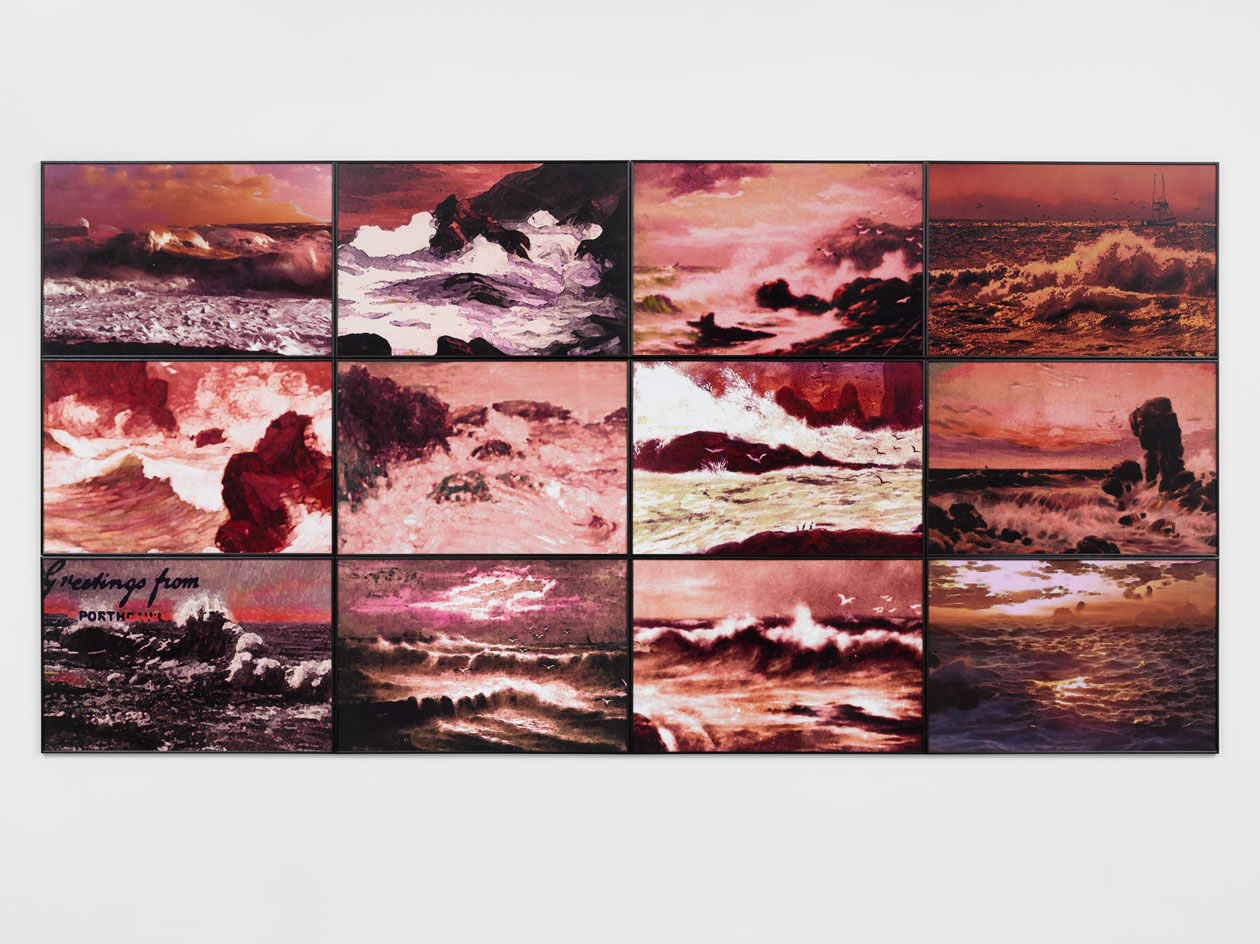
First-aid cabinets contain phials of holy water, referencing Joseph Beuys’ ability to endow ordinary materials with sacred values.
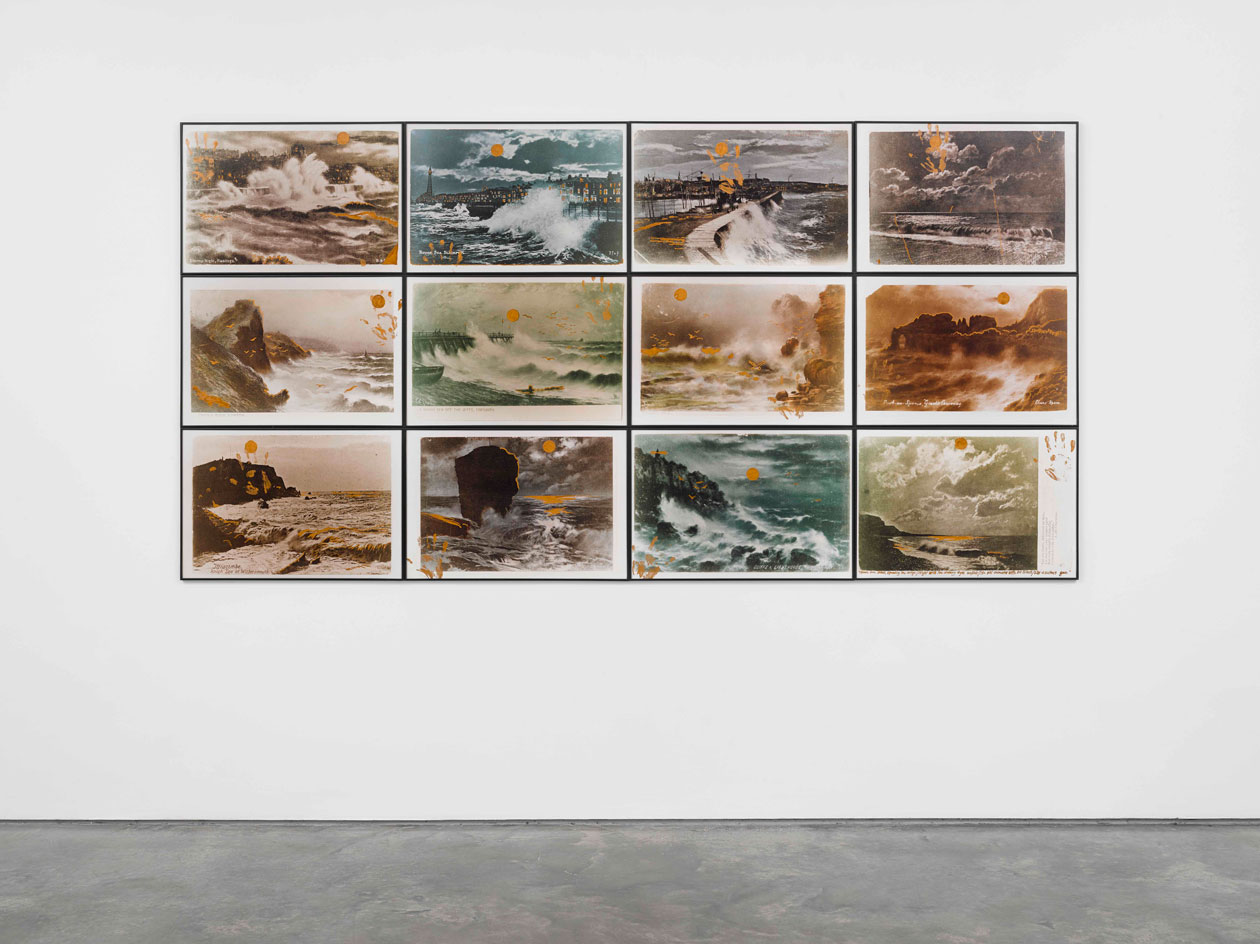
Hiller’s blown-up postcard works of raging seascapes are imbued with an unsettling other-ness.
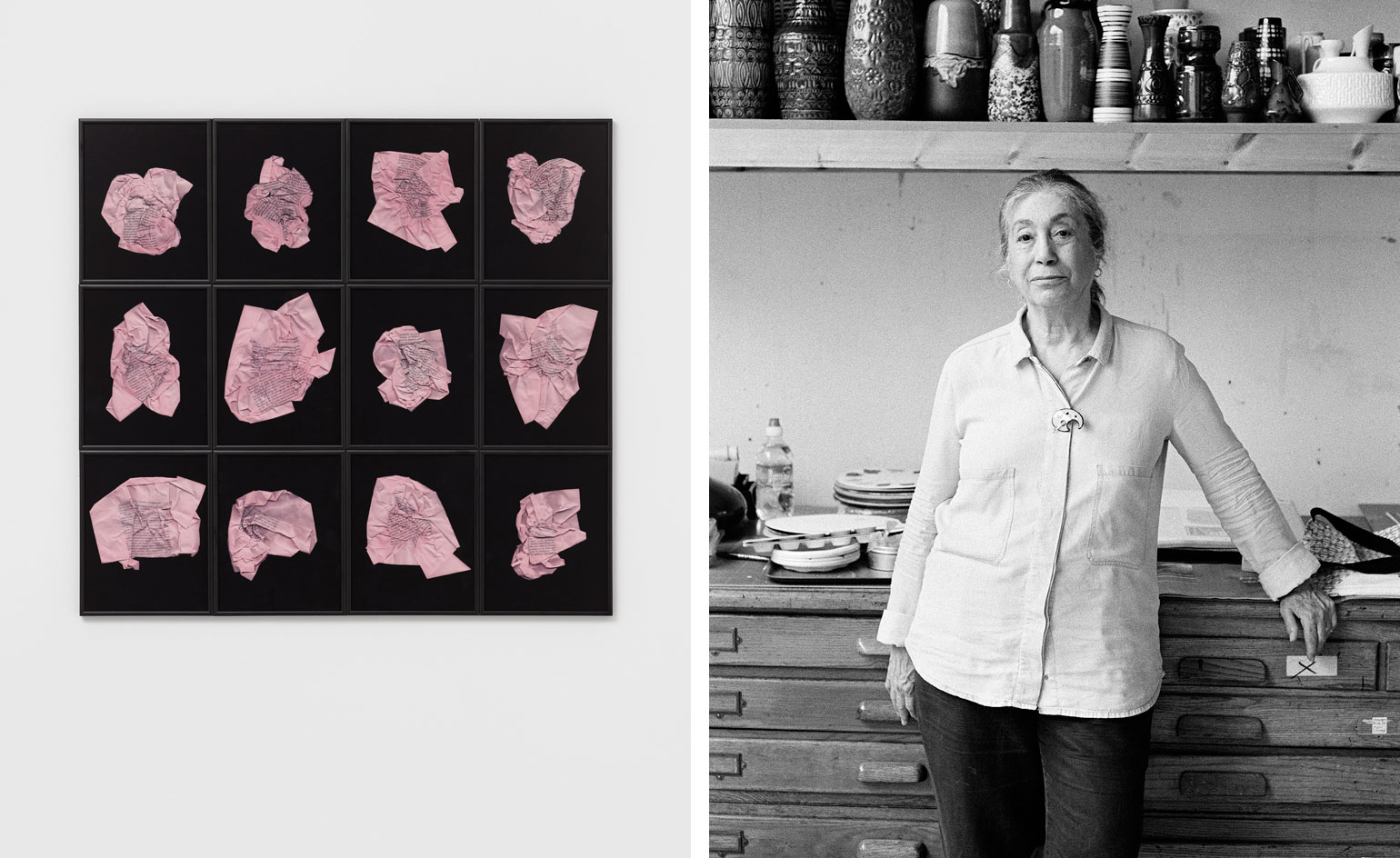
Hiller describes her work as ’a kind of archaeological investigation, uncovering something to make a different kind of sense of it’.
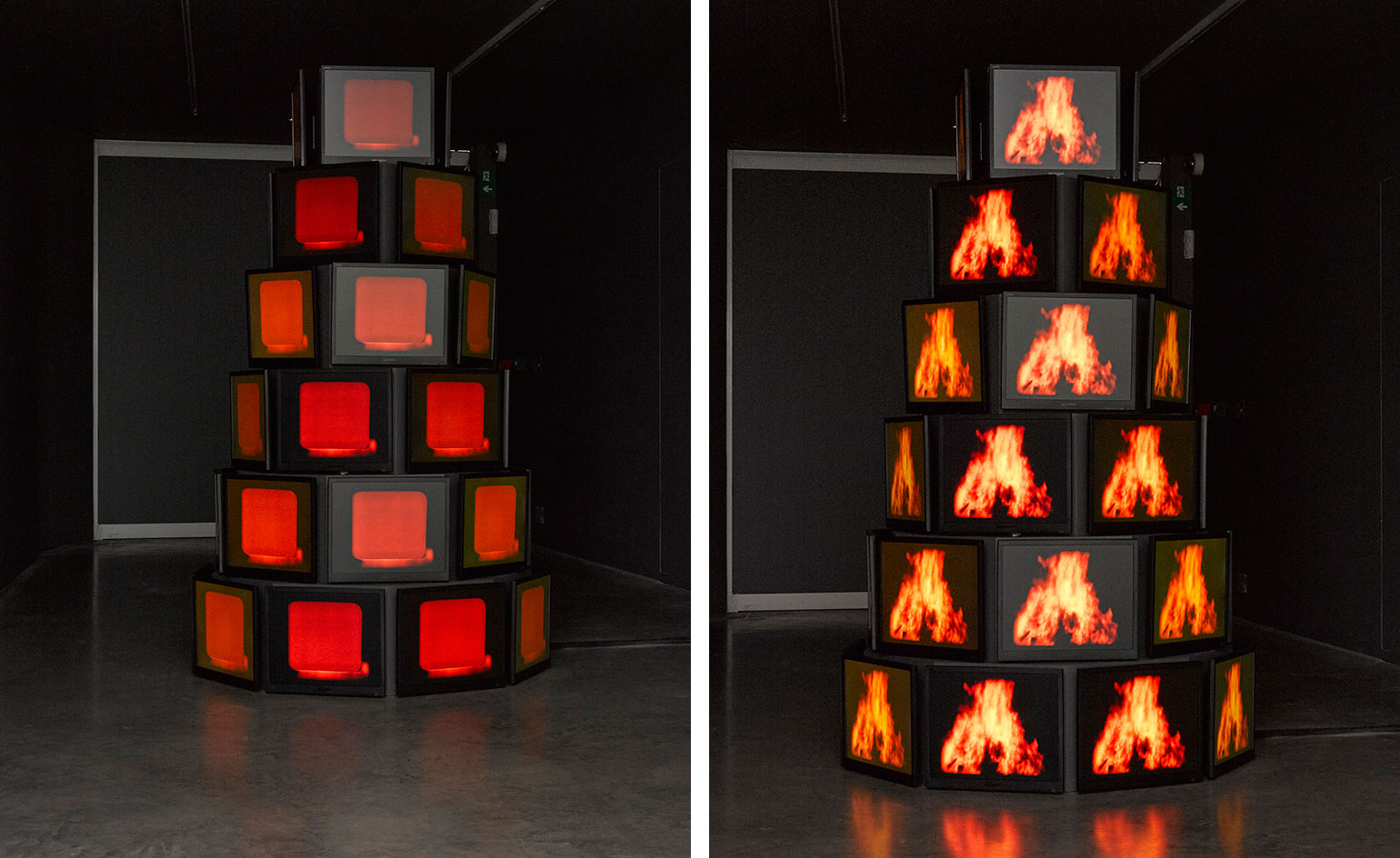
Belshazzar’s Feast, 1983 was the first video installation piece bought by the Tate. Right: the piece in campfire version
INFORMATION
’Susan Hiller’ is on view until 9 January 2016. For more information, visit the Lisson Gallery website
Photography: Jack Hems. © Susan Hiller. Courtesy of Lisson Gallery
ADDRESS
52–54 Bell Street London NW1 5DA
Wallpaper* Newsletter
Receive our daily digest of inspiration, escapism and design stories from around the world direct to your inbox.
-
 Put these emerging artists on your radar
Put these emerging artists on your radarThis crop of six new talents is poised to shake up the art world. Get to know them now
By Tianna Williams
-
 Dining at Pyrá feels like a Mediterranean kiss on both cheeks
Dining at Pyrá feels like a Mediterranean kiss on both cheeksDesigned by House of Dré, this Lonsdale Road addition dishes up an enticing fusion of Greek and Spanish cooking
By Sofia de la Cruz
-
 Creased, crumpled: S/S 2025 menswear is about clothes that have ‘lived a life’
Creased, crumpled: S/S 2025 menswear is about clothes that have ‘lived a life’The S/S 2025 menswear collections see designers embrace the creased and the crumpled, conjuring a mood of laidback languor that ran through the season – captured here by photographer Steve Harnacke and stylist Nicola Neri for Wallpaper*
By Jack Moss
-
 The art of the textile label: how British mill-made cloth sold itself to Indian buyers
The art of the textile label: how British mill-made cloth sold itself to Indian buyersAn exhibition of Indo-British textile labels at the Museum of Art & Photography (MAP) in Bengaluru is a journey through colonial desire and the design of mass persuasion
By Aastha D
-
 Artist Qualeasha Wood explores the digital glitch to weave stories of the Black female experience
Artist Qualeasha Wood explores the digital glitch to weave stories of the Black female experienceIn ‘Malware’, her new London exhibition at Pippy Houldsworth Gallery, the American artist’s tapestries, tuftings and videos delve into the world of internet malfunction
By Hannah Silver
-
 Leonard Baby's paintings reflect on his fundamentalist upbringing, a decade after he left the church
Leonard Baby's paintings reflect on his fundamentalist upbringing, a decade after he left the churchThe American artist considers depression and the suppressed queerness of his childhood in a series of intensely personal paintings, on show at Half Gallery, New York
By Orla Brennan
-
 Ed Atkins confronts death at Tate Britain
Ed Atkins confronts death at Tate BritainIn his new London exhibition, the artist prods at the limits of existence through digital and physical works, including a film starring Toby Jones
By Emily Steer
-
 Tom Wesselmann’s 'Up Close' and the anatomy of desire
Tom Wesselmann’s 'Up Close' and the anatomy of desireIn a new exhibition currently on show at Almine Rech in London, Tom Wesselmann challenges the limits of figurative painting
By Sam Moore
-
 A major Frida Kahlo exhibition is coming to the Tate Modern next year
A major Frida Kahlo exhibition is coming to the Tate Modern next yearTate’s 2026 programme includes 'Frida: The Making of an Icon', which will trace the professional and personal life of countercultural figurehead Frida Kahlo
By Anna Solomon
-
 A portrait of the artist: Sotheby’s puts Grayson Perry in the spotlight
A portrait of the artist: Sotheby’s puts Grayson Perry in the spotlightFor more than a decade, photographer Richard Ansett has made Grayson Perry his muse. Now Sotheby’s is staging a selling exhibition of their work
By Hannah Silver
-
 Desert X 2025 review: a new American dream grows in the Coachella Valley
Desert X 2025 review: a new American dream grows in the Coachella ValleyWill Jennings reports from the epic California art festival. Here are the highlights
By Will Jennings